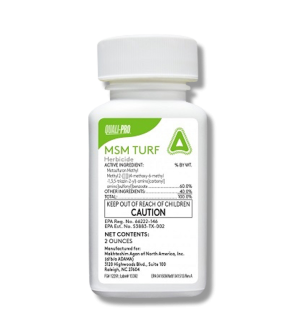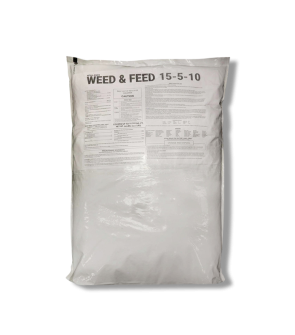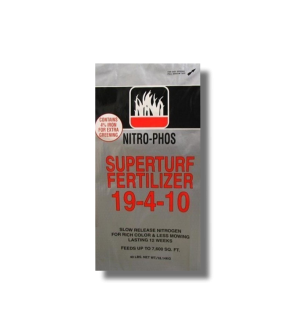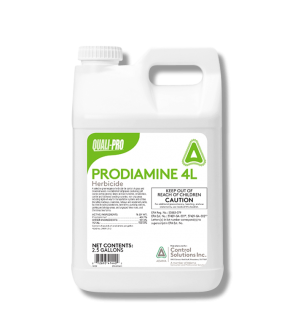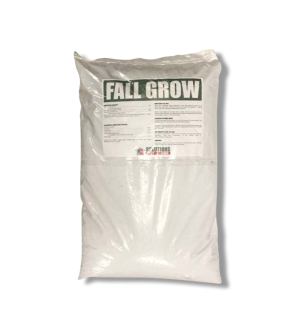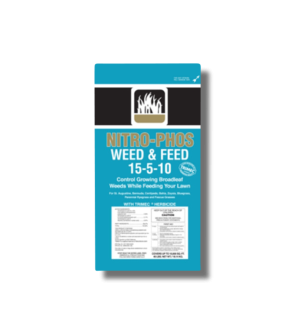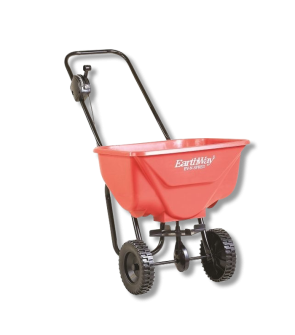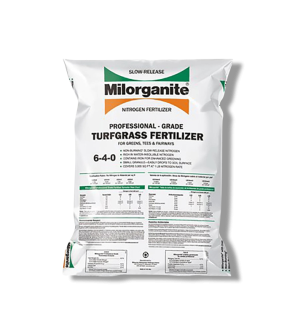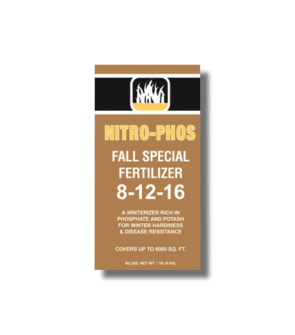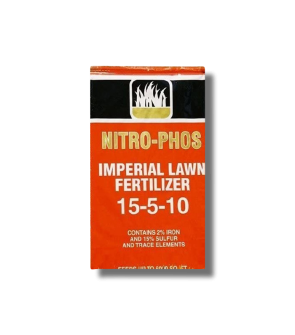Cool Season Turf Fertilizer Schedule
Most Effective Products
Cool Season Turf Fertilizer Schedule
This page is a general fertilizer schedule guide for cool-seasoned grass in the northern region of the United States. Using the products and methods suggested will maintain control of any cool-seasoned grass species. This article also gives additional information on the different species and specific treatment instructions and options you can take. Follow this guide and the recommended products to ensure an successful fertilizer schedule for your cool-seasoned turf.
Maintained lawns and landscapes are not an easy task, but it is important to follow a well maintained fertilization schedule. The northern region of the United States will usually see mild summers and harsh winters. Most lawns in the uppermost third of the country are cool-season grasses while in the mid-portion is known as the "transition zone" where both warm-season and cool-season grasses grow and overlap. Kentucky bluegrass, perennial ryegrass, fine fescue, and tall fescue are common types of cool-season grasses.
By contrast, warm-season grasses grow better in warmer climates, while cool-season grasses will grow better in the cooler climate and temperatures from late spring to fall. Cool-season grasses have a better tolerance for the cold, but will turn brown during warm months. They will need extra care and watering in the summer. Cool-season grasses are divided into two broad categories, ones that need a lot of sun and others that can grow in the shade or under dense tree covers.
For cool-season grasses you should begin the fertilization during cooler seasons such as from late summer to early fall, but do not wait until ground is frozen. Frozen turf is not your best friend and will not allow new seeds or products to spread through the soil. However, you can get a handle on managing your cool-season turf by following a good cultural practice, fertilizers, and herbicides. Knowing whether you have cool-season grass or a mix of warm-season grass is essential to your lawn care program.
If unsure, then you always contact a Solutions Pest and Lawn professional to help guide you on the steps and tips to determine what type of grass you have. Another option you can take is to go to national pesticide information center with a sample of your grass and soil to determine the species of plant and current state of your soil. Knowing this information can help better guide you on what steps to take with the lawn care program you want to implement.
Our Recommendations
- Buy a fertilizer from a physical local store in your area. Local pesticide companies typically have fertilizers that contain specific nutrients required for your areas turf. Online stores are not as specified to regions turf and may require some research.
- Fertilizers that contain high amounts of nitrogen.
How To Choose Fertilizers
Your cool-season grass needs nutrients like nitrogen added to the soil, because this stimulates growth and color of cool-season grasses. Because nitrogen is heavily depleted during warmer climates you will apply a fertilizer containing significant amounts of nitrogen into your turf to achieve a beautiful green and lush yard.
Of course, before you choose a fertilizer it would be helpful to have a soil analysis of your cool-season turf to determine if other nutrients are needed. Once you have a better understanding of your soils condition and what types of nutrients are needed then you can have a better understanding of type of fertilizer to buy. To choose a fertilizer based on nutrient needs you will need to check the "npk" on the label. NPK on fertilizers means there are three major elements acquired when using a fertilizer and that they always are in the order: nitrogen, potassium, and phosphorus. It may not always say npk on the description, but you will see a series of three numbers. These numbers represent the amount of nitrogen, phosphorous, and potassium used in the fertilizer. For example, for solutions 8-12-16 fall fertilizer it has 8% nitrogen, 12% phosphorus, and 16% potassium.
Other ways to choose a fertilizer will be the color of your cool-season grass and if there are any present weeds. Either method will be tied with the nutrient needs of your turf. Remember each species of cool-season grass has a different level of nutrient it must have.
What is the Grass Telling You?
Nature will always effect the way your cool-season grass appears whether it is with lush green turf, discolored turf, weeds, or even funguses will depend on the state of the grass. Weeds are an easy way to tell what the current immune system is of your grass. Weeds could mean your soil is lacking nutrients, not enough fertilizer is present, soil is compact and not draining well or receiving enough oxygen. Each species of weed requires a different method of weed control. Once you find this you can kill the weeds faster and help to maintain the health of your turf.
If you can't see any color discoloration, weeds, funguses like mushrooms, or if your just not sure your soil is meeting your grasses nutrient needs then you can go to your areas local agricultural department to test your soil and grass. Depending on your state, this process may not be very expensive ranging from $5 to $10 dollars, but this step is crucial in the long run of your lawn care management. You can go to national pesticide information center to find your local testing center for plants and soil and remember to bring a sample of your turf.
If a testing center is not for you, then you can apply a slow-release fertilizer, which is less likely to harm your plants, but with unknown nutrient variables it may not be effective or possibly can take a long time to see any changes in your cool-season grass.
Selecting The Best Fertilizer Based On Your Lawn
Fertilizers come as either a liquid or granular formula to treat your lawn, gardens, and landscapes. Depending on how much time you want to put in will depend on the type of fertilizer you choose. A granular fertilizer is a slow release type that will expel nutrients slower into the soil based on moisture and temperature, but will take possibly up to two months to see any results. This time may take even longer due to environmental factors and current lawn condition. A slow release fertilizer is recommended more than a liquid because it will slowly release nutrients, increases turf color longer, and has a longer protection within your cool-season grass.
If a granular fertilizer is too slow for you, then you can use a liquid fertilizer, but be aware they are more synthetic in nutrients and will not last as long as a granular fertilizer. A liquid fertilizer is good for quick release of nutrients into soil, giving plants an immediate boost of nutrients and stimulation for growth. You will need to reapply more often with a liquid fertilizer so depending on your time availability is a big factor to take in with this product.
User Guide
Tools Needed
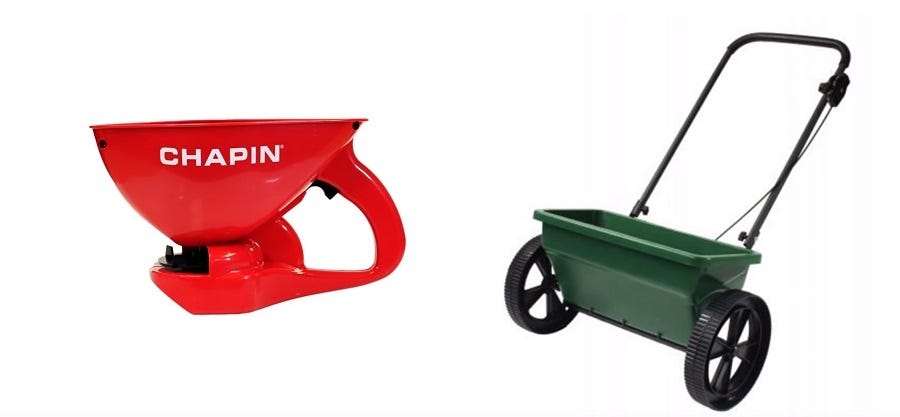
- Handheld spreader
- Broadcast spreader
- Walk-behind spreader
- Push broadcast spreader
- Drop spreader
Other Equipment
- Hose-end sprayer
- Wheelbarrow
- Rake
PPE-Personal Protective Equipment
- Chemical resistant gloves
- Mask
- Safety Glasses
- Closed toe shoes
Step 1: Water Your Turf Throughout the Year

Typically, most lawns require at least an inch of rainfall or water annually to maintain their health and appearance. For cool-season grasses, it is important to learn what species of grass is in your lawn for some types of turf require more or less water than others. In some circumstances, grasses receiving too much water for their species will become waterlogged and die from lack of drainage. The best time to water cool-season grass is at the beginning of summer, when they are known to become brown due to excessive heat.
Step 2: Fertilize your Cool-Season Grass in September

Generally, cool-season grass and transitional zones application of fertilizer should be made in September as they entering their growth cycle. Remember, cool-season grass cannot survive in the summer and will be depleted of energy. You should apply a fertilizer of your choice that is either liquid or granular, either one will do the job it is just your preference of which one you want.
Since September is ideal growing conditions for cool-season grass. Applying a fertilizer at the very beginning is fine, because if you wait to long to apply it to the turf the ground will be frozen and unable to move the fertilizer nutrients throughout the soil. So, you will want to apply it at least a month ahead of when it generally snows or frosts in your area.
When applying fertilizers, you should make one application in the second half of spring, and one application between the end of summer and early fall (usually September). You can apply more fertilizer if weather conditions or other environmental factors call for it. Such as if your cool-season grass was exposed to longer periods of heat than normal.
Step 3: Calculate How Much Fertilizer to Use

The first thing to do when applying fertilizer is to determine how much square footage of the area to treat. To do this, measure in feet and multiply the area length times the width (length X width = square footage). Certain fertilizer products will have a recommended application rate on its label. The standard application rate of fertilizer you want to apply is between 0.5 lb to 2 lb. of fertilizer per 1,000 sq. ft.
The label of the fertilizer you choose will give you the recommended application rate. Solutions 15-5-10 Weed & Feed Fertilizer, for instance, recommends applying 3.2 to 4.0 pounds of product per 1,000 square feet of turf grass.
To apply Solutions 8-12-16 Fall fertilizer based on nutrient level you will need to divide the percentage of that nutrient in decimal form. For example, in the Solutions 8-12-16 Fall Fertilizer, to determine how much fertilizer is needed for 1 pound of nitrogen you will divide the 1 from the level of nitrogen in the fertilizer. In fertilizers it will always have three sets of numbers that represents the nitrogen, phosphorous, and potassium which represents the npk (nutrient) level in the fertilizer. So, you will take the 8 (convert to decimal form) in the weed & trimec fertilizer and divide it by 1 to determine how many pounds should be used per sq. ft (1 / 0.08 = 12.5 lbs). Therefore, apply 12.5 pounds of fertilizer per 1,000 sq. ft. to supply 1 pound of nitrogen (if that is the level of nutrient needed in the soil).
Step 4: Mowing your Lawn From March to November

Mowing conditions will vary in each area, but a general rule is to mow when your grass exceeds three inches or higher. Do not mow when your cool-season grass is below three inches because the root of the turf holds the water. If cut to low, then the grass will not be able to hold water and become more susceptible to diseases and die.
You will notice that your starting to mow a little from March to May, which is fine if your following the rules listed above. After all a consistent mowing pattern is important to your turfs health. During these warmer months, your going to notice your cool-season turf is turning brown which could be from excessive heat. But, it is also could have an underlining health issue. Either way, brownish or yellowish cool-season turf should not be mowed and will need to be treated with the appropriate herbicide.
September to November, you will notice your cool-season grass is growing rapidly. It is recommended to mow once a week or when grass exceeds three inches. Depending on your area allow for your grass to grow an appropriate length before cutting it.
Things to Consider
Cool-season grass and transition zone grass may have similarities of products to use, but it is always recommended to read the directions and effects on the product label. Some species of grass are more sensitive than others when applying a herbicide or fertilizer.
Completing a fertilizer application schedule for your cool-season grass will typically begin in the early fall or before the ground is frozen.
The results of this fertilizer schedule will depend on your herbicide products, state of grass, and nutrient needs of the soil. The predicted time to treat is subject to change based on weather conditions and other environmental factors (drought, floods, hurricanes).
Key Takeaways
- Before selecting a fertilizer, it is recommended to have the soil and grass tested to determine what nutrients are needed in your turf
- Transition zones, may have a mix of cold-season grass and warm-season grass and may be able to withstand warm-season fertilizers and products.
- Cool-Season Grass are not active in the warmer months of the year and will only be awake during the colder season. Typically, from early fall to possibly early spring.
- During warmer months, you will see cool-season grass turn brown, but with the appropriate herbicides and fertilizers this can be improved or lessened.
-
-
-
-
-
-
-
-
Milorganite Pro 6-4-0$50.49 - $50.49
-
-

